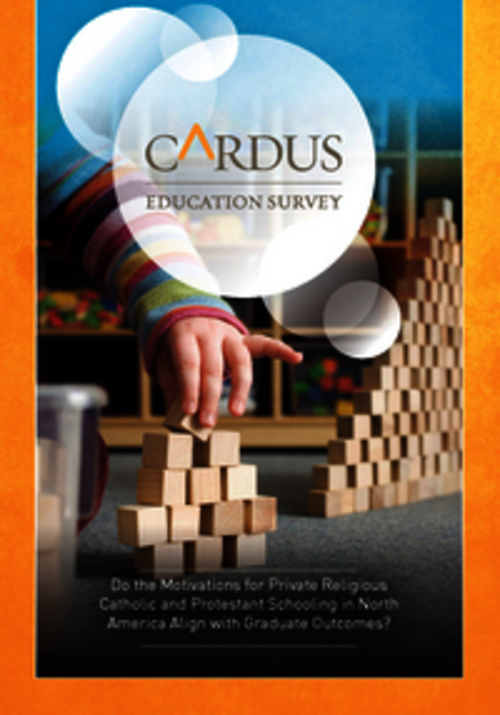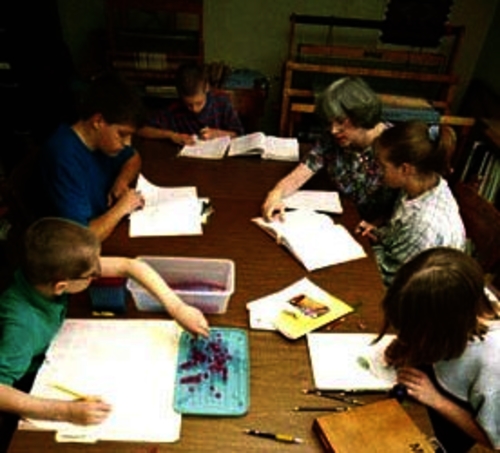Ray Pennings talks about Calgary City Soul on Calgary CBC, Tuesday morning, arguing that Calgary's inner-city faith communities actually shape much of the city's social fabric. Listen to his interview here .

Pennings on CBC Radio to talk about Calgary City Soul
October 11, 2011

Cardus College of Trades research covered at Building journal
A broad coalition of small, medium, and large construction employers across Ontario is calling on the next provincial government to take immediate action to either overhaul or abolish the Ontario College of Trades. The call comes in response to a major study of the College completed by Hamilton, Ont.-based think tank Cardus. Read the entire coverage at Building.ca.
October 5, 2011

Canada’s Coming Decade of Dissensus
The change that the 2011 election brought to the Liberal and NDP parties is only a small part of a fundamental reshaping of the Canadian political landscape. Ray Pennings and Michael Van Pelt argue that the stability expected from this election will not materialize. Instead there will be power struggles within the Conservative party regarding the upcoming health care battle, military debates, and Arctic sovereignty, struggles that will coincide with a resurgent NDP and Liberal partnership. While appearances suggest the coming decade will be one of political stability, the reality will be a decade of dissensus. Si l’élection fédérale de mai 2011 a sensiblement changé la donne pour les libéraux et les néodémocrates, cet aspect reste mineur par rapport à l’ample restructuration en cours du paysage politique canadien. Contrairement aux apparences, estiment en effet Ray Pennings et Michael Van Pelt, ce scrutin ne produira pas la stabilité attendee mais lancera plutôt au sein même du Parti conservateur une lutte de pouvoir à propos de questions sur les soins de santé, les projets militaires et la souveraineté dans l’Arctique, une lutte qui coïncidera avec la résurgence du partenariat entre le PLC et le NPD. Si bien que la décennie de stabilité politique qu’on croit avoir inaugurée se caractérisera en fait par de vives dissensions. Much has been made of the significant changes that the Liberal and New Democratic parties will need to make as they adjust to their new realities after Election 2011. This noise masks the fact that these adjustments are only a small part of a more fundamental reshaping of the Canadian political landscape. All of our political institutions need to adapt to the emerging Canadian identity that will replace the now officially defunct pan-Canadian consensus. Starting in the 1960s, all Canadian political institutions operated within a mainstream consensus. Peacekeeping, multiculturalism, strong central government programs, the primacy of the Charter of Rights—these were not the purview of the left or right of the spectrum but the consensus within which all respectable political debate took place. The difference between red and blue was about how fast we should drive and when we might take risks and pass—not about which road we should be on. There is some debate about whether this consensus was deep-rooted or whether it was an elite illusion, but both sides acknowledge that it began to erode in the 1980s. The Progressive Conservatives divided themselves while holding power, with both the Reform and Bloc Québécois parties, not to mention several smaller splinter groups, all expressing their discontent with how Prime Minister Brian Mulroney was managing this consensus. The resulting discord allowed the Liberals and Prime Minister Jean Chrétien to extend the life of the consensus for another decade or so, but its ultimate demise was certain and with the election of Prime Minister Stephen Harper’s minority government in 2006, the consensus officially went into palliative care. In a Policy Options piece published in March 2006, we opined that this likely marked the death of the pan-Canadian consensus; however, since no other consensus had yet developed to replace it, the politics of the decade to come would belong to the skilled managers of coalitions, as opposed to visionaries. The Conservative Party contained six distinct groups, whose interests converged on only a few issues. A reorganization on the left of the political spectrum to match that which had already occurred on the right would be an inevitable consequence. With the election, in Stephen Harper’s words—spoken at nearly every campaign stop—of a “strong, stable, majority national government” on May 2, it is easy to be fooled into thinking that the next decade will be one of stability. Politically speaking, at least in the executive branch of government, this is likely to be the case. The Conservative majority is secure for four and a half years, until the fixed election date of October 2015, and, barring outrageous scandal or incompetence, another four beyond that. It would seem extremely unlikely that either the Liberals or the New Democrats will present a realistic alternative government to Canadians in 2015. So on the face of it, we are facing the better part of a decade of stability. But don’t be fooled. Beneath the surface, in every political party, but most fiercely among Conservatives, a debate will rage regarding how a new consensus might be shaped. A decade from now, many Canadians will be voting for a party that they cannot imagine voting for today. So what will the contours of this debate look like? The words will be about what constitutes fundamental Canadian values, but values debates are rarely argued in such esoteric terms. Instead, we will fight about health care, with all sides realizing that the current model is unsustainable in light of our demographics, and therefore some other model than a single national health care model will take its place. We will debate what our military is for and how we will survive in a world where Canada has an ally in the world’s dominant power, the United States, as we have had with Britain for all of our history. Are we really serious about defending the Arctic, when interests not as friendly to our interests start drilling for oil and claiming it is theirs over our objections? We will be rethinking our institutions, realizing that the silliness of our current Senate debates is hardly an answer to providing the necessary regional voices (and voices for cities in an increasingly urban society). That debate will continue to be complicated by the Quebec question, as well as by the trading partners whose importance is different depending on the regions. We will be dealing with the challenges of demographics, trying to figure out how 2.5 workers are going to be able to provide for each retiree, especially considering that the current 4.7 workers are already finding it a pretty heavy burden to bear. For each of these problems, there will be answers from the left and the right, just as there are today. But the spectrum on which we place these left-right answers will be fundamentally different. And the process of getting there is much more fundamental than who will become the permanent leader of the Liberal Party or whether the 59 Quebec NDP MPs will learn to represent Quebec interests in an effective federalist manner. For the Liberals and the NDP, there will be soul-searching and a messy period of discontent. Their battles are too recent and hostilities too deep, just as were those of the Conservative and Reform parties in the 1990s, for clearer heads to prevail and a quick adjustment to be made to the new realities. Within the Conservative Party, the perks of power will mask the rather fierce debate that will occur behind closed doors on the competing visions of libertarians (who think the market will solve most everything), Burkean conservatives (who believe that institutions other than government, such as families, community groups and faith communities, need to have an increased role) and fiscal conservatives (who seem to think that as long as you balance the books, we can live as we please). At about the same time as the current Liberal and NDP members decide once again to work together (alienating about a third of their group who cannot stomach working alongside bitter enemies, in the same way Joe Clark can’t stand Stephen Harper), the Conservative infighting is likely to burst into a more public feud. The coincidence of these events will see a significant political restructuring around a decade from now. We expect that to shape Canadian politics for a long time to come. In the meantime, however, Prime Minister Harper has firm control of the levers of power. Most significant among these powers is the power of appointments, and the Supreme Court in 2020 will be one that is far more likely to give preference to an interpretation of the Constitution based on a federalist division of powers interpretation (sections 91/93) than to defer to the Charter. Federal programs will be cut in order to maintain a few central social programs that seem politically sacrosanct, more leniency will be given to the provinces to experiment in their areas of jurisdiction, and the host of federal agencies will have more conservative-minded boards and senior staffers. What difference this will make is unclear, as they will be just as vulnerable to the allures and perks of power as their more liberal-minded predecessors were. The rhetoric of “stable national majority government” sounds alluring, and if the theatrics of Parliament and confidence votes is the measure, Canadians have certainly voted for a reprieve. The reality, however, is that the coming decade will be characterized more by dissensus than by stability, in spite of outward appearances to the contrary.
October 4, 2011

In Alberta, are “conservatives” dead as a dodo?
The task of keeping the torch of Canada's most dominant political dynasty aflame has suddenly become more daunting. One of the unabashed "progressives“ Gary Mar, Alison Redford or Doug Horner “will be chosen by those with Progressive Conservative memberships on Oct. 1 to replace Ed Stelmach as Alberta's premier. None, in their search for the province's ultimate prize, will be burdened by the need to pander to or even negotiate with the province's conservative constituency. That's because not a single "conservative" leadership contender “most notably Ted Morton“ made the cut in the first round of voting on Sept. 17 “an event noteworthy for a turnout that declined by close to 40 per cent. This is catastrophic for conservatives still within the PC tent. Simultaneously, it's a dream outcome for those on the centre-right who've moved to Danielle Smith's Wildrose Alliance and for whom the worst-case scenario was a Morton victory. Finishing fourth on Sept. 17, Mr. Morton had placed second in the first round of leadership balloting in 2006 with a platform that mirrors the one developed by Wildrose. It was Mr. Morton, too, who, as finance minister, dug in his heels last winter and precipitated the crisis that led to Mr. Stelmach's retirement. Mere months ago, he was seen as the man most capable of reuniting Alberta's conservatives. One of the idiosyncratic legacies of four decades of uninterrupted PC power in Alberta is the process used to select its leaders. Candidates may sell memberships right up to within two weeks of leadership ballots, and voting occurs at polling stations within each constituency. Reminiscent of the “the party is the people; the people are the party†justification of one-party states, this process gives people from all political backgrounds the opportunity to select their premier. Many Liberals, New Democrats and others have taken the approach that, if their movements can't gain power in elections, they can at least exercise their influence by selecting their opponent's leader. It's this that makes them into two-night-stand Conservatives and convenient, if temporary, allies for leadership candidates. Unable to win power from without, they gain it from within, and there's certainly no shortage of conservative thinkers who suspect the PCs have been the victim of a bloodless, albeit democratic, coup. The fact that long-time Liberal heavyweight Daryl Fridhandler is associated with the Mar campaign has done little to dispel these suspicions. It's impossible to track the extent to which this strategic voting takes place, but there's no question it's a feature unique to Alberta PC leadership campaigns. (As a for instance, I was told last week of a left-of-centre Alberta Party supporter who purchased a Tory membership in order to vote for Mr. Morton, hoping that a Morton victory would clearly position the Tories on the right and thus leave more room for the Alberta Party to win votes on the left in the next election.) In the midst of all this, long-time conservative activist Ken Boessenkool and a small but influential Blue Committee are searching for a way to reunite the now defeated conservative wing of the PCs with Wildrose in order to avoid the split-right scenario that guaranteed three consecutive federal majority governments for Jean Chrétien's Liberals. The fear, as Mr. Boessenkool puts it, is that such a split could lead to Alberta's being governed by a centre-left party. Many would argue that, as of the final PC vote on Oct. 1, that horse will have left the barn. The PC dynasty lives on, but 40 years of conservative rule in Alberta may have come to an end.
September 29, 2011

Peter Stockland on Sun News
Peter Stockland from the Cardus Centre for Cultural Renewal joins Brian Lilley with the story of a group of people who were practicing Catholic mass in Quebec and subsequently fined for partaking in a “cultic eventâ€. Watch online here.
September 29, 2011

Monitoring religious freedom is tricky work
Ten years after the horrors of 9/11, Canada and the world are still at a loss to offer a consistent, intelligent definition of religion, either at home or abroad. Religion, pundits say, is like pornography: We know it when we see it. Do we? Short weeks ago, thousands lined the streets of Toronto, chalking sidewalks with last words of hope and love - acts and words that certainly seemed religious. Was it just secular national sentiment, or was there something intangible, something esthetic, something religious, in the response to Jack Layton's passing? We don't know because we no longer know what religion is. With Parliament resumed, that question is going to get tested. Religion and its freedom is being upgraded from a fringe concern to its own corner office at Foreign Affairs, and while most think it's a good idea, no one is quite sure why. Freedom, like equality and fairness, is one of those virtues nestled deep into the Canadian psyche. But the qualifier is everything: religious freedom is not for the faint of heart. None of which is to say the $5-million office is a bad idea. It is high time Canadians caught up with this perplexing global resurgence of religion and the uncomfortable realization that the globe is not populated by ironic, urban secularists. The Office of Religious Freedom was a convenient dual stroke: an electiontime carrot for the Conservative base and a prudent first step to studying religion and its many meanings for policy making. Politics and good policy do occasionally align. But at least two questions loom over the implementation of an office of religion freedom: who will control it, and, well, what is religion? The first is a mirror to concerns over its sister Americabased Office of Religious Freedom, where critics alleged "religious freedom" had Christian evangelical undertones, or, at the more extreme end, was a mirage for conditioning societies for proselytizing. Canada's obsessive politics of multiculturalism, especially in Foreign Affairs, will almost certainly make this a non issue, but it will be important for the new office to express its independence quickly. It may be evangelicals in the Conservative support base who pushed for the office, but its mandate should define religious freedom very broadly. Ironically, evangelical activists in Canada probably won't oppose that. Contra Armageddon advocates, evangelicals generally support freedom of conscience and religion for all religions. Pluralism still lives at large in that community. Still, that distancing may mean justified criticisms of allies as well as easier, politically expedient criticisms of others. And it will mean, challengingly, that the definition of religious freedom the office uses will come under constant fire. Religious freedom for Christian dissidents in China is easy, but what will the office say about Christian anti-homosexual legislation in front of the Ugandan parliament? Religion can go very wrong and this office will need the moral fibre to stand and name its abuses, as well as its assailants. Secondly, this means that the Office of Religious Freedom should spare a desk for Canada. As cathartic as it may be to pronounce on the effects of religion abroad, that work will inevitably feed back into our unsettled consensus on the role of religion at home. The irony should not be lost on observers watching this office that Canada has come under censure from the UN and other international bodies for its own practices of freedom and rights, especially as they revolve around religion. The privileged public funding of Catholic schools in Ontario is one example. The secularist bullies at the Canadian Association of University Teachers and their disingenuous investigations of religious universities is another. Or Quebec's proposed Bill 94, which limits access for those wearing niqabs? The reason this office will be up to its neck in controversy as it monitors abroad is because we have no settled consensus on what religious freedom is at home. It has become a sort of western tradition to outsource our more interesting social experiments, but foreign offices pitching freedom policies good enough for abroad but not at home will pockmark the Canadian political landscape with explosive hypocrisies.
September 28, 2011

The Cardus Survey results – part 1
To read the full article, click here .
September 26, 2011

Montrealer faces charge of cultic activity, fine, for holding a Catholic mass
MONTREAL: Paula Celani will be in a Montreal courtroom Nov. 1 fighting a fine for attending an illegal Roman Catholic Mass. Canadians of all religious faiths “and even those who care only about protecting Charter freedoms “should cross their fingers that she wins. Celani actually showed up to fight the case this week. Alas, three public sector "witnesses" expected to testify against her were no shows so the matter was delayed until the day after Halloween. "I'm not sure why I'm the one who has to make the effort to come back when they're the ones who didn't show up," Celani said after Tuesday's brief hearing before Judge Jean-Pierre Bessette. "It doesn't make sense, but then nothing about this does. It's ridiculous." Ridiculous doesn't begin to describe it. Frightening is a much better place to start for the events that began with an entirely uneventful gathering of a Catholic group on October 4, 2009. Celani is the one in court only because her signature was on a $700 rental contract for the use of two rooms in a city-owned complex called La Maison du Brasseur in the borough of Lachine, just west of downtown Montreal. About 100 people belonging to a lay Catholic association used the rooms to watch some inspirational videos and have a potluck lunch together. Oh, and horror of horrors, they sang songs and held a Mass behind closed doors. Then everyone went home. End of story. Or so it seemed. Except that seven months later, in April 2010, Celani received a $144 ticket for having allowed the Mass to take place. By so doing, she had broken a bylaw that prohibits "cultic"activity such as "praying, singing religious songs or conducting religious celebrations." Under the same regulations, interestingly, renters are allowed to serve liquor provided they have the necessary permits. They are forbidden, however, from using propane tanks to cook inside the building. So, you can get hammered in La Maison du Brasseur. You just can't blow the place up or mention God. What Celani and her group did not realize was that they were being "observed" by three employees of the borough of Lachine working at the complex that day. In fact, no one had warned Celani, or anyone else in the group, that a Catholic Mass is now a legally prohibited activity in parts of Quebec. Still, the observers dutifully filed reports attesting that the law had been ravaged by prayer, song and thanksgiving. One of the employees, Virginie Gagnon, complained some of the group were even guilty of "soliciting" by attempting to sell rosary beads within the Maison du Brasseur precincts. (In fact, Celani admits, some younger members were selling rosaries to their friends to raise money for an aid project in Haiti. In the immortal words of Ebenezer Scrooge: "Are there no workhouses? Are there no prisons?") Elsewhere in the 15-page document that forms the evidentiary basis for the case against Celani, an employee/witness named Francois Vaillancourt notes that in one video a man on the screen was "speaking in Italian, I believe." Italian, eh? Suspicious, that. No doubt some kind of code these Catholics use among themselves. Kind of like Latin for Mafioso. Such low-rent absurdity can't be allowed to obscure the very real, very serious, very frightening abuse of Charter-guaranteed freedom of speech, freedom of association and freedom of religion here. By what authority can municipal pipsqueaks in Montreal or Lachine or anywhere else for that matter, decide that "religious songs" are anathema while hip-hop music, to take one genre, is just ducky? Under what mandate can they forbid a group of people from renting a room to quietly celebrate their faith, yet allow, say, a group of louts to rent space to set up a TV and collectively drink their faces off watching the Canadiens lose to the Leafs during the Stanley Cup playoffs? (Okay, bad example because it will never happen. But you get my point.) And finally, how do they dare go against established Charter law that freedom of religion doesn't just mean the freedom to keep one's faith in one's head. It means the freedom to live out that faith within the very wide ambit of reasonable behavior in a free and democratic society? With luck, these questions will all be answered Nov. 1 when Judge Jean-Pierre Bessette throws out the ticket and Paula Celani walks out of the courtroom with a big smile on her face, having won one for freedom. Fingers crossed. If not, if the fine is upheld, we are in frightening times indeed.
September 26, 2011

Cardus Education Survey, Homeschoolers: Helen Lee
September 23, 2011
Media Contact
Daniel Proussalidis
Director of Communications
